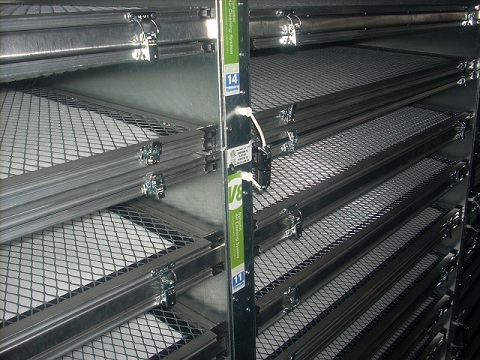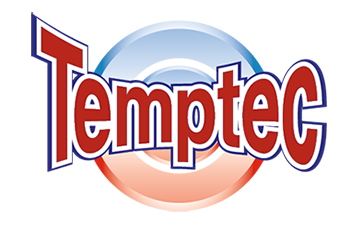Higher Education

Dynamic Air Cleaners are an ideal indoor air quality solution for schools, colleges and universities. Without sacrificing budgets, higher education institutions can utilize these highly-versatile air cleaners to lower energy costs and establish greener, healthier learning environments for teachers and students.
A report from The American Institute of Architects, The Redford Center, ICLEI USA – Local Governments for Sustainability and the U.S. Green Building Council (USGBC) estimates inefficiency costs the average school $100,000 each year. The report also states 14 million students attend schools considered below standard or dangerous, with more than 15,000 schools having air deemed unsafe to breathe. Generating a return on investment in three to five years, Dynamic Air Cleaners remove dangerous airborne particles that other air cleaning systems miss, including odors, smoke, bacteria, allergens, fine dust, mold and pollen, without producing any harmful ozone.
“The conventional approach to air quality in schools is to introduce fresh, outside air to dilute contaminants. But this can be costly and inefficient, especially when the outside air is polluted by school bus exhaust and vehicle emissions from nearby roadways, highways and urban streets,” said Duke Wiser, president of Dynamic Air Quality Solutions. “Cleaning the air instead of diluting it can save energy and money. Dynamic Air Cleaners cut outside air requirements in half, sometimes even to a third, and have much lower static pressures than other high efficiency air cleaners.”
In addition to helping schools improve indoor air quality, Dynamic reduces absenteeism caused by illnesses spread by airborne contaminants, as well as reduces the risk of potential mold problems by removing mold spores from the air stream. Dynamic’s lighter, less bulky and easy-to-handle air cleaners also reduce filter maintenance and save labor costs, as the media last much longer than conventional passive filtration.

High Efficiency Air Cleaning – Dynamic Air Cleaners remove dangerous airborne particles that other air cleaning systems miss…including odors, VOCs, smoke, bacteria, allergens, fine dust, molds and pollen…without producing any harmful ozone.
Increased Attendance – Studies document the correlation in the reduction of absenteeism to cleaner air in schools [Pennsylvania grade school – 46% reduction in absenteeism].
Lower Energy Costs - The conventional approach to air quality in schools, as specified in ASHRAE Ventilation Standard 62, is to introduce fresh, outside air, to dilute contaminants. The amount of outside air depends on the number of building occupants. Most school HVAC systems are designed for 15 CFM per person. This can be costly, in terms of conditioning outside air, and sometimes ineffective, when the outside air is polluted. Cleaning the air, rather than diluting it, can save energy…and money. With Dynamic Air Cleaners, outside air requirements can be cut in half…or even to a third - under the guidelines of ASHRAE Standard 62 IAQ Procedures. And Dynamic Air Cleaners have lower static pressures than other high efficiency air cleaners.
Ease of Maintenance -Dynamic Air Cleaner media pads last longer than conventional passive filtration; extending change-out intervals, and saving labor costs. Maintenance personnel like Dynamic media pads because they are lighter and less bulky than bag or cartridge filters, and are easier to handle. And Dynamic V8 media pads have a maintenance interval measured in years instead of months.
Versatility –No other air cleaners offer the same versatility when it comes to application in the types of HVAC equipment used most frequently in educational institutions. Dynamic Air Cleaners can be applied to: packaged terminal units, unit ventilators, rooftop units, water-source heat pumps, and large custom air handling units. For large custom-built air handling units, Dynamic Air Cleaners can be factory installed at several manufacturing facilities including Trane in Lexington, KY and Trane-Custom Climate Solutions.

Mold Prevention - Dynamic Air Cleaners reduce the risk of potential mold problems by removing mold spores from the air stream, as well as sub-micron particles, which can provide a food source for mold growth. And Dynamic Air Cleaners help stop the spread of airborne bacteria.
Some states cover up to 100% of the capital equipment cost for any equipment used in schools and universities that provide energy savings within specified payback periods. State programs can be found at dsireusa.org or www.energy.gov among others.
The net savings on using Dynamic Air Cleaners can often generate a return on investment of three to five years.
Here are some of the Higher Education institutions using Dynamic Air Cleaning Systems:
- Aquinas College
- Alma College
- Arizona State University
- Austin Community College
- Austin Peay State University
- Brown Aveda Institute
- Butte College
- Cégep Saint-Jean-sur-Richelieu
- Central Michigan University
- Central Piedmont Community College
- Coastal Carolina University
- College of Siskiyous
- Dartmouth College
- DeVry University
- Douglas College
- East West University
- Fisk University
- Fitchburg State University
- Forsyth Technical Community College
- Ft. Lewis College
- Georgetown University
- Georgia Institue of Technology (GA Tech)
- Harvard University
- Howard University
- Jackson State Community College
- Johnson & Wales University
- Liberty University
- Logan College
- Lynchburg College
- Marymount University
- Massachusetts Institute of Technology
- Michigan State University
- Millersville University
- Mount Saint Mary's University
- Mt. Wachusett Community College
- Nanyang Technological University
- North Central College
- North Dakota State University
- Northwest Community College
- NW Missouri State
- Northwest MS Community College
- Northwestern University
- Nossi College of Art
- Ohio State University
- Okanagan College Centre for Learning
- Old Dominion University
- Oregon Health & Science University
- Oregon State International Housing
- Philadelphia University
- Princeton University
- Queens College
- Rowan Cabarrus Community College
- Royal Roads University
- Singapore Polytechnic
- Smith College
- South Carolina State University
- Southern Methodist University
- Spartanburg Community College
- St. Leo University
- Stanford University
- Temasek Polytechnic
- Texas Christian University
- Trident Technical College
- Tulane University
- Union College
- University of Alberta
- University of Calgary
- University of California Riverside
- University of California Berkeley
- University of Florida
- University of Illinois Chicago
- University of Iowa
- University of Louisville
- University of Maine
- University of Maryland
- University of Memphis
- University of Miami
- University of New Mexico
- University of North Carolina
- University of North Texas
- University of Oregon
- University of South Carolina
- University of Tennessee
- University of Texas - Arlington
- University of Victoria
- University of Virginia
- Vancouver Island University
- Washington & Lee University
- Washington State University
- Washington University
- Western Michigan University
- West Virginia University
- Worcester Polytechnic Institute
- Yale University
- Yishun Polytechnic



